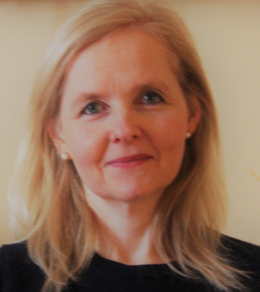Brian Pegg is a lieutenant with Windsor-Severance Fire Rescue and a long-time fire service professional.
The work was in his blood, though the 38-year-old Timnath resident didn’t automatically choose the field because of genetics. A great-grandfather, grandfather and uncle had been in the industry. Pegg only turned to the work about 16 years ago when he found architecture to be less appealing than anticipated.
“It wasn’t an interest,” he said. “And I signed up for it not knowing what I was getting into.”
Now that Pegg knows more about the field, he’s taking another step in his career by going for a bachelor’s degree in public safety. While he’s not fully sure where it will take him, it will allow Pegg to erase a regret.
In January, Pegg will be one of about a dozen enrollees in Aims Community College’s first bachelor’s degree program. The college will launch the public safety bachelor’s of applied science in the spring semester. The fully online program will feature disciplines in criminal justice, EMS, fire science and police studies and was created for people like Pegg, according to Aims leaders.
Pegg has an associate degree in fire science from Aims and is working full-time with Windsor-Severance. He wants the chance for additional education.
“We have, probably, thousands of alumni who have gone through our public safety programs who work out in the community,” said Randy Souther, director of the public safety institute at Aims’ Windsor campus. “This is a great opportunity for them to come back to the college, take some courses for career advancement. It just elevates the level of education in the public safety industry and provides a local means for individuals to get that training so they can advance in their career.”
Pegg said he’s not enrolling in the Aims program because he has a specific plan or path in mind for the bachelor’s degree. He wants to earn the degree. Pegg’s checked into bachelor’s options in the past. He has a long history with Aims, and he’d like to continue the relationship.
“My biggest regret in life by far is not pursuing a four-year degree out of high school,” he said. “One hundred percent. I’ve wanted to right that for a long time. Once I heard Aims was starting theirs, I was all in.”
Pegg was a member of the first class of students to attend Aims’ fire academy to earn certification as a firefighter in 2006. He joined Windsor-Severance Fire Rescue as a volunteer for a couple of years, continued at Aims to earn his associate degree and earned a full-time position as a program coordinator at the fire academy.
Pegg began full-time work with Windsor-Severance Fire Rescue in 2009, and he continues to work as an instructor at the college’s fire academy.
“It’s the experience of getting that bachelor’s and networking with classmates and instructors,” Pegg said. “It’s the perfect opportunity to right the regret.”

The bachelor’s program has been in the works for four or five years since legislation changed to allow community colleges to offer bachelor’s programs, according to Souther. The program became official in the last several weeks after earning approval from the Higher Learning Commission.
Souther said the college contacted industry partners early in its research into the B.A. program. Aims reached out to fire departments, law enforcement and emergency medical technicians to determine how much support and interest there’d be for the college’s effort.
The response was overwhelmingly in favor of Aims’ plan, and the development process continued over the years.
Souther said the college anticipates between 12 and 16 students in the first cohort in January, though it’s too soon to have finalized enrollment numbers.
One of the supporters of the public safety bachelor’s program is Windsor-Severance Fire Rescue Chief Kris Kazian, Pegg’s boss. Kazian said the program is important because it provides access, affordability and quality for students who choose to attend.
Kazian also said as fire personnel work their way up in the ranks, education becomes more important. For roles such as battalion chief, fire chief and deputy chief, bachelor’s and master’s degrees are preferred for consideration.
Kazian has an associate degree and a bachelor’s degree in fire science and a master’s degree in organizational leadership, according to his LinkedIn page.
“Personally, I’m a strong proponent of education,” Kazian said. “As you grow and excel in your field, that educational track is one of the ways we benchmark people’s ability. The exposure and knowledge of different courses and curriculum, the projects that are done in those courses absolutely lead you to be a better firefighter and a better fire officer.”

Susan Moreland, Aims’ new dean of public safety and transportation, said a unique facet of the new bachelor’s program is it’s set up for students who have an associate degree in a public safety discipline, allowing the students to concentrate on upper-level courses.
Moreland said students pursuing an associate of applied science degree will have priority for entry into the bachelor’s program.
“It’s a smooth transition for them,” she added. “It’s the convenience aspect too. They get an AAS from us. They go to work in an entry-level position, and they hopefully get sponsored by their employers (for the bachelor’s degree).”
Moreland said the cost of tuition for the bachelor’s degree will be low, the same as for an associate degree: $72 per credit hour for students in Aims’ tax district and $114 per credit hour for students in state.
Moreland said the mission of the public safety bachelor’s is to prepare students for leadership management positions in their chosen field. The program will hone in on concepts such as professionalism, communication, teamwork, analysis and problem-solving.
“Our goal is really for these students, these professionals, to go back to their workplace or back into the community to apply these constructs in diverse emergency or non-emergency situations,” Moreland said.















